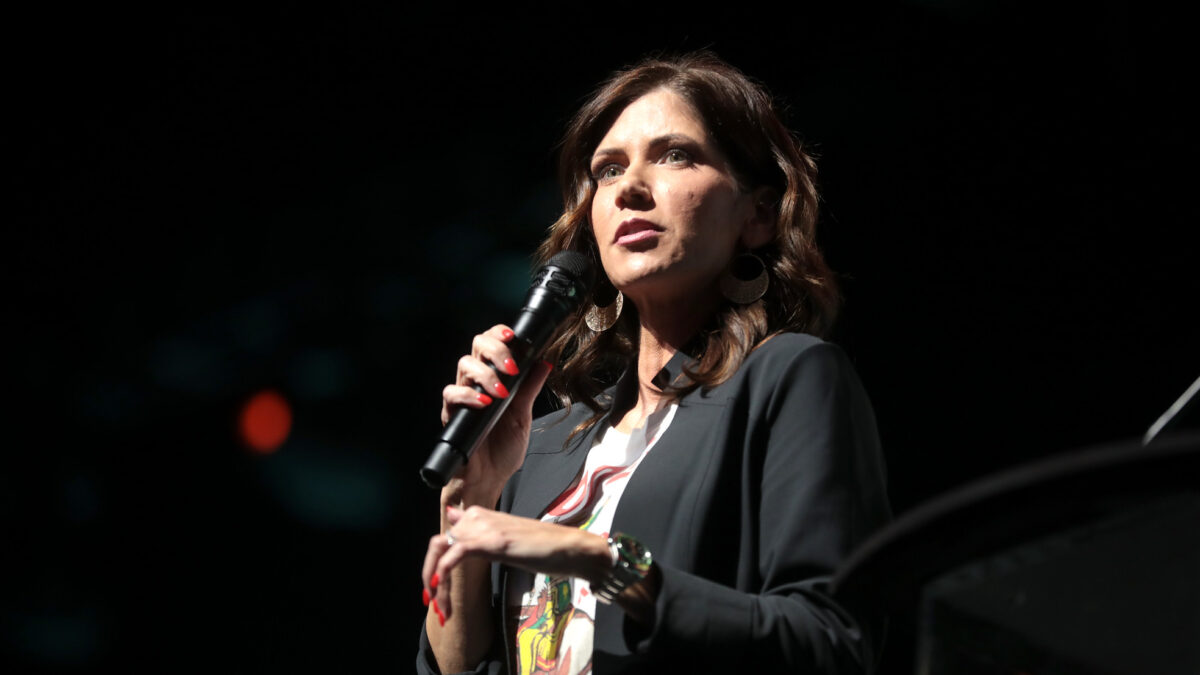
One problem with telling people to “be themselves” is that they often don’t know who they are. Indeed, many people proclaiming this mantra seem intent on dismantling stable sources of identity, such as family, patriotism, and religion.
Instead of defining ourselves by relationships, place, and faith, we are encouraged to define ourselves by what we want — from sex to consumer goods to entertainment. This reduction of people to bundles of impulses makes them easy to market to, but it does not provide a stable source of identity.
It’s no wonder racial identity is making a comeback, and it’s no wonder critical race theory — which defines people by race and racial power structures — has taken over our culture’s leading institutions. Leftist-controlled schools and colleges are leading the way, and are more obsessed with race than ever, as is the legacy media and most of our nation’s leadership class.
In a world of unstable identities, race is an old certainty. In a world where identity is fluid and often up for sale, in which internet posing can become reality, race seems to have an authenticity that is hard to fake.
But the current focus on race is making our society more racially fraught. Instead of healing and authentic human flourishing, it brings bitterness and confusion.
The Resilience of Race
Racial identities have resisted the trends marking the decline of other sources of strong identities for several reasons. First, for many members of minority groups, there has been too little material and social improvement in recent years; a natural result of this is a persistence in the primacy of racial identification.
Second, race isn’t scorned the way traditional religious beliefs are. Nor has it been subjected to the deconstruction that sex and normative relations between the sexes have been, thereby destabilizing another solid source of self-understanding. In contrast, racial consciousness is encouraged by our cultural elites.
In part, this is because racial awareness bolsters their moral self-image. The civil rights movement is one of the main moral prisms through which they look at the world, and they believe themselves to be its heirs. Letting race recede would therefore undermine their moral authority.
Third, the continued importance of race legitimates the enormous civil rights bureaucracy that was established to squelch segregation and overt racial discrimination. This government power has found new targets in dissident bakers and florists, but its defenders still justify it by appealing to its origins in racial desegregation. They argue that if the baker can opt-out of creating custom cakes for same-sex wedding ceremonies, then a return to Jim Crow can’t be far behind.
This argument is ridiculous, but it illuminates how race is indispensable to our leadership class. A post-racial society would require them to give up both a flattering self-understanding and a great deal of power. Thus, they have been easy marks for critical race theory. The rhetorical self-flagellation it sometimes demands is a small price to pay for the assurance that they are still better than the (mostly working-class and middle-class) whites who resist such gestures.
‘Whiteness’ vs. Everything Else
Leftists would prefer the populace to identify as isolated consumers, but if we are to have group identities, they would prefer race to class. This is why there has been so little concern over the racial essentialism that critical race theory encourages. The supposed anti-racism of critical race theory often masks the class interests of its proponents.
But despite their unconcern, critical race theory is toxic, encouraging racial obsession and enmity. In particular, it insists on a dichotomy between whites (always inherently guilty of oppression and of possessing “white privilege”) and everyone else (lumped together as “people of color,” who are all victimized by whiteness.
This binary encourages racial animosity even as it fails to capture the complexity of racial and ethnic groups, let alone of individuals who refuse to be reduced to a racial category. Thus, the race theory ideologues often vacillate between racial absolutism and sounding like there is an actual version of the racial draft sketch from Chappelle’s Show (really not safe for work viewing), only with whites drafting entire ethnic groups. For instance, the same academics who divide the world between whites and “people of color” treat Jews and Asians as “extra white” for admission purposes.
In politics, critical race theory encourages vicious attacks on minority conservatives, who are treated as race traitors who are guilty of “whiteness.” For example, a Washington Post article used a theory of “multiracial whiteness” to explain minority support for Donald Trump. The column concluded, “In the post-Trump era, the challenge will be to prevail over the extremism of Trump’s White majority while trying to prevent the politics of whiteness from becoming an increasingly multiracial affair.”
This mindset explains why Amazon marked Black History Month by canceling the Clarence Thomas documentary — erasing a black man who doesn’t toe the line. It also explains why California’s planned ethnic studies program will “teach millions of children in the state’s public schools to achieve liberation against the descendants of European colonists of 500 years ago by teaching them to chant to Aztec gods who required human sacrifice.” It’s what happens when people believe “whiteness” is the root of all evil, and seek to eradicate it.
The New Religion
For some people, racism and whiteness have become free-floating substitutes for older ideas such as the Christian doctrine of original sin. As John McWhorter has been arguing in a series of essays, the current iteration of anti-racism is functionally a religion.
A substitute religion is taking over our culture because of self-serving and cowardly adults who are protecting their status. As Bari Weiss observes, “Power in America now comes from speaking woke, a highly complex and ever-evolving language.”
As her reporting on critical race theory’s conquest of elite education illustrates, not only children but also many parents and teachers are afraid of challenging the new orthodoxy, lest they imperil their social standing and prospects. They too have forsaken the roots of strong identities that would provide courage. As it is, no one wants to be the first to stand up to our self-appointed commissars for social justice and anti-racism.
Today’s leftists go along, and even cheer, as race is treated as a foundational identity, and as we are told that it is racist to strive for a post-racial society. Yet almost none of their multitude of symbolic gestures of anti-racism address the real problems of race in this country, or the harms caused by the decline of traditional religious, familial, and community sources of identity. Each theatrical bit of anti-racism is just a self-serving justification for an elite that has failed in its responsibilities to poor and working-class Americans, especially racial minorities.
For example, many who loudly support the current anti-racist cause have presided over the catastrophically extended shutdowns of public schools that are disproportionately attended by minority children — and these schools were often incompetent even at their best.
An Approach of Despair
Removing a few Dr. Seuss books from the official catalog doesn’t help poor black children learn to read, but it does give a lot of (mostly white) leftists and hangers-on a chance to preen. Dumping the Redskins name, to which most Native Americans did not object, likewise does nothing about the scandalous conditions on many reservations.
Thus, despite the religious fervor of many anti-racism activists, they are exacerbating racial tensions. They do so directly, by encouraging racial identification and acrimony, and indirectly, by waging a symbolic crusade that does not address genuine racial injustices and inequalities. And they have prepared the ground for strong racial identities by denigrating other loyalties and attachments.
Their approach is one of despair. They have abandoned hope in a shared humanity that can move past the mistaken racial categories of our forefathers — there is recrimination and posturing, but no hope of real justice or peace.
Their greatest failure is of love. The current crop of self-styled anti-racists and social justice activists are seething with hate, but it is only upon strong love that we can build identities capable of moving beyond racial essentialism and division. The tribalism of race, and the historical baggage it drags behind it, can only be surpassed by love for something, or Someone, greater than tribe or tongue or nation.









